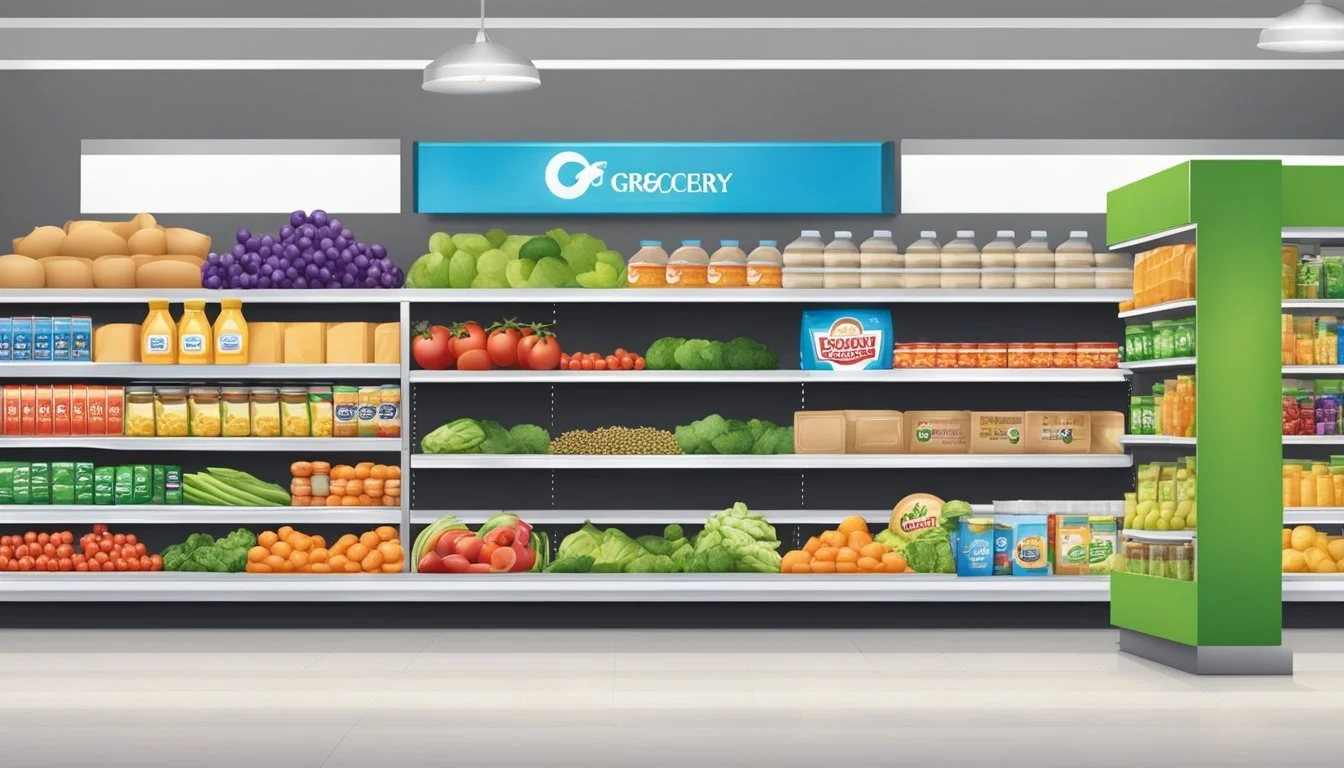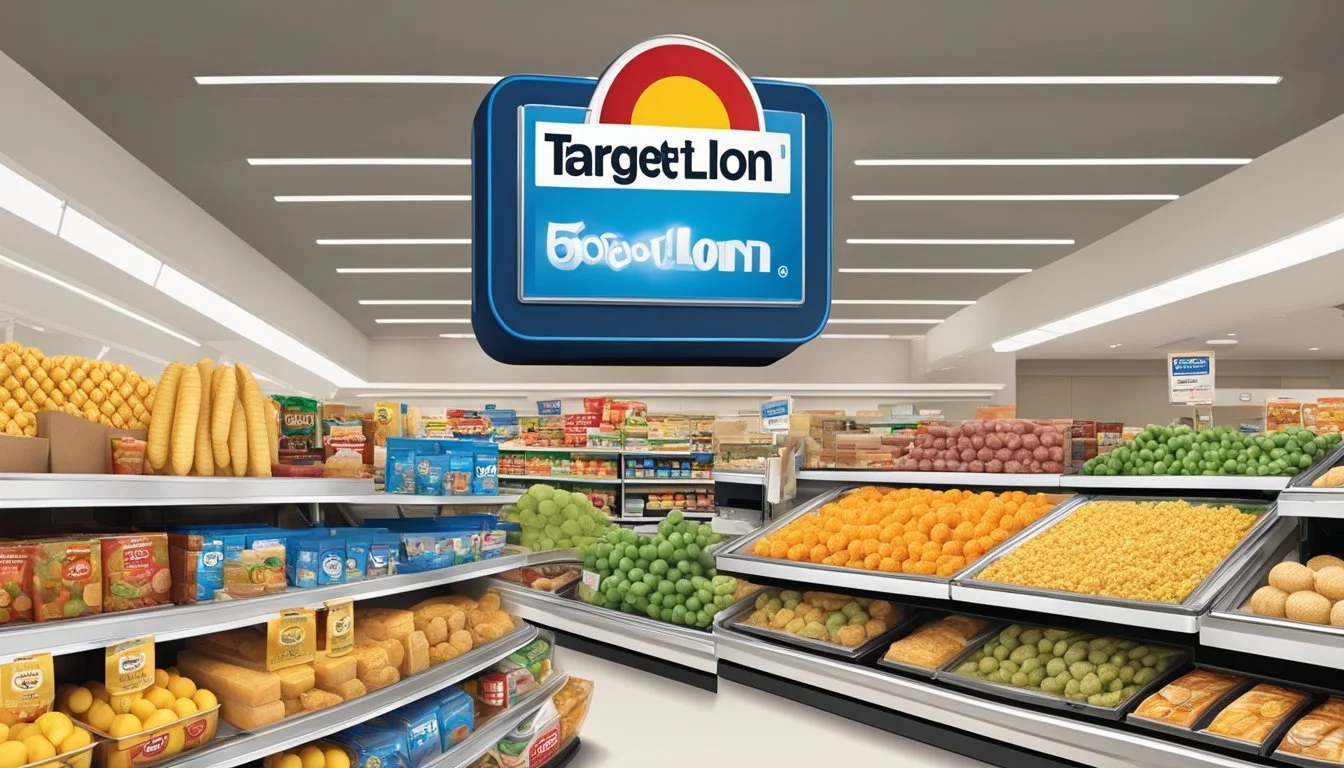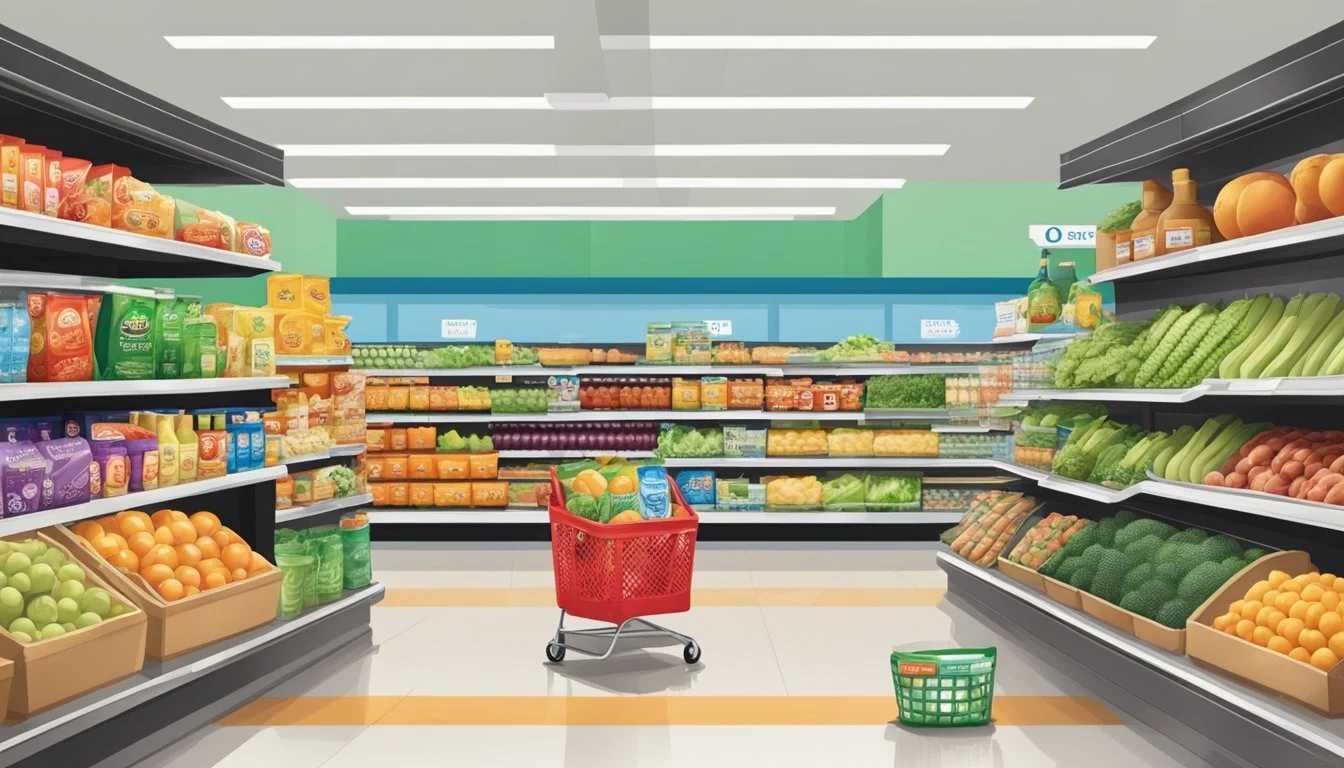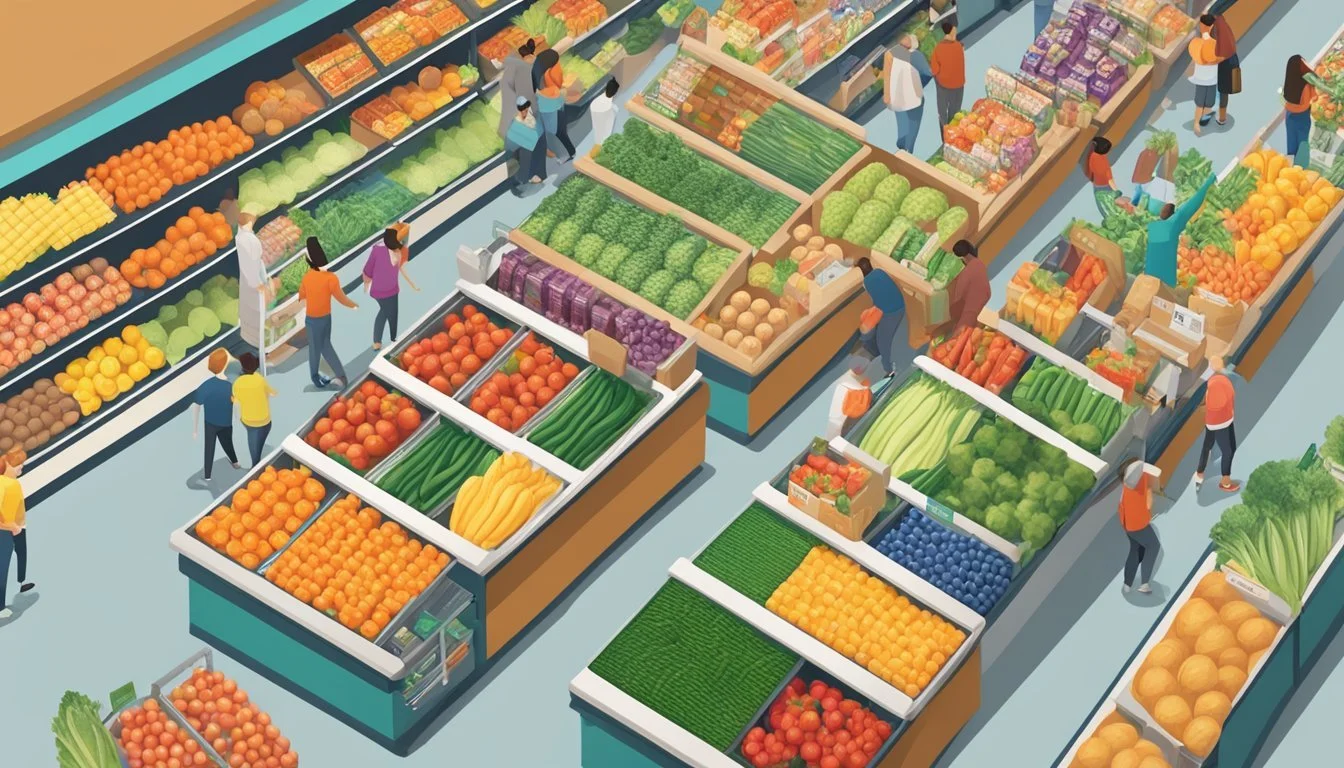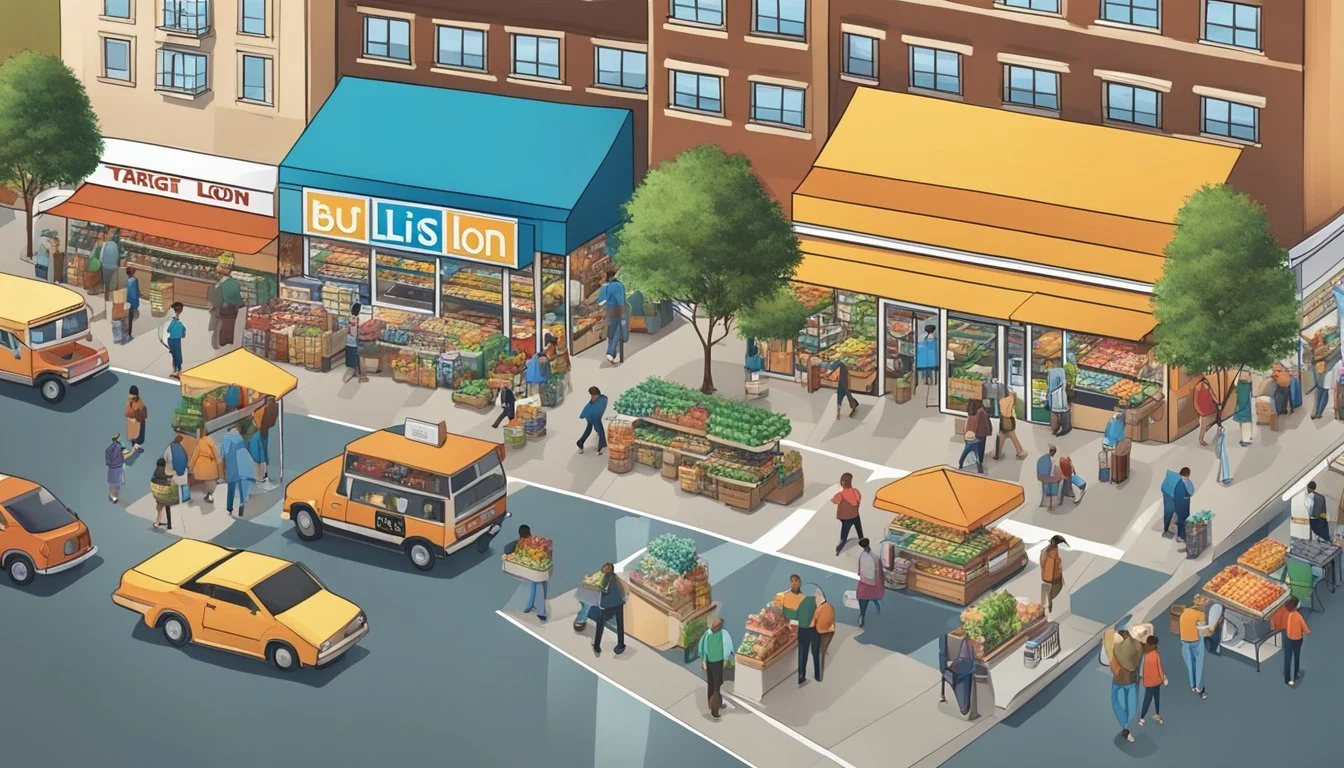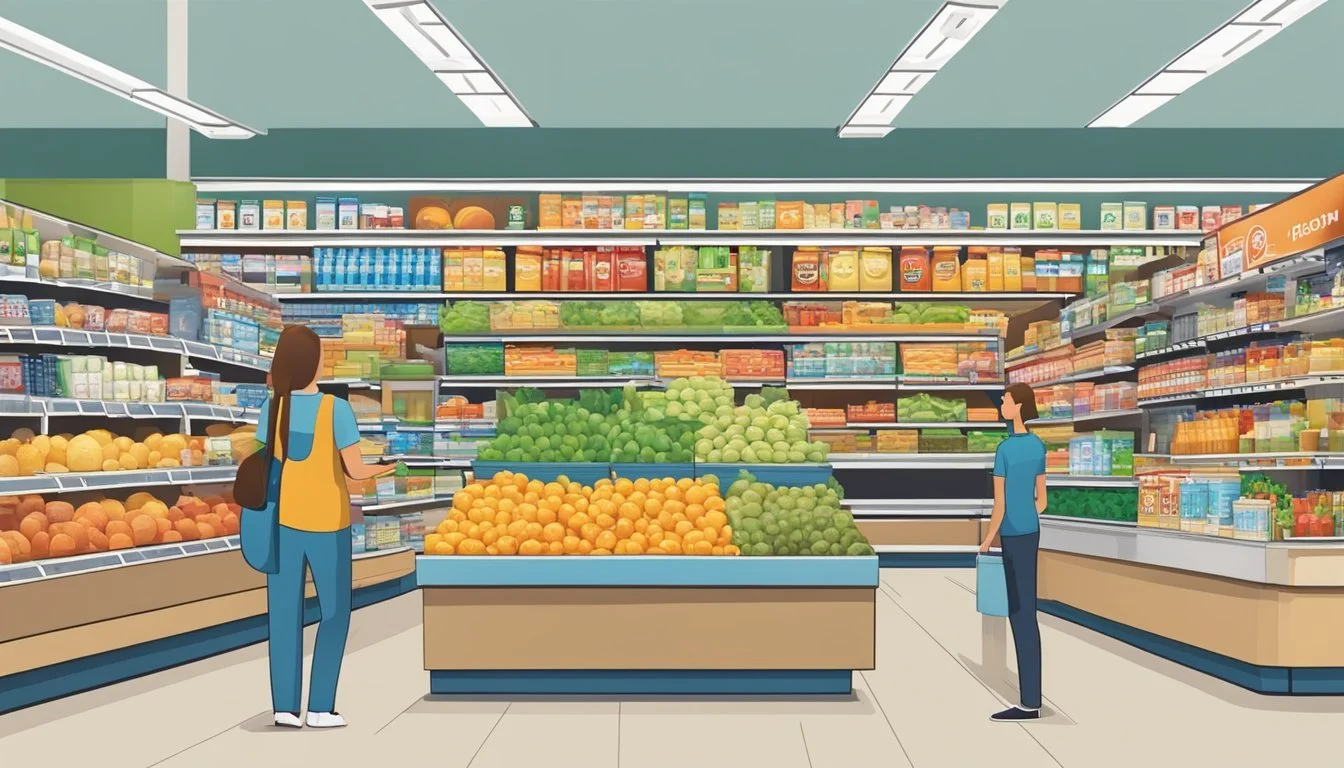Target vs Food Lion
A Comprehensive Comparison of Price, Quality, and Selection
Target and Food Lion represent two distinct grocery shopping experiences for customers across the United States. While Target offers a wide range of products beyond groceries, Food Lion focuses primarily on providing affordable food options. Target's prices are typically about 19% higher than Food Lion's, making Food Lion a more budget-friendly choice for many shoppers.
Both supermarkets have their strengths and weaknesses. Target is known for its clean, modern stores and trendy private-label brands. Food Lion, with over 1,000 locations in ten states, emphasizes value and often matches the quality of bigger brands at lower prices, especially in their produce section.
Customer preferences between these two grocery stores often depend on individual priorities. Those seeking a one-stop shop for household items and groceries may prefer Target. Shoppers focused solely on groceries and looking to maximize savings might find Food Lion more appealing. The choice ultimately comes down to balancing factors like price, product selection, and shopping experience.
Company Backgrounds
Target and Food Lion are prominent players in the American grocery retail landscape. Each has a unique history that has shaped its current position in the market.
History of Target
Target Corporation began as Goodfellow Dry Goods in 1902 in Minneapolis, Minnesota. In 1938, it rebranded to the Dayton Corporation and opened its first Target store in 1962.
The company quickly expanded, becoming a nationwide retailer by the 1980s. Target differentiated itself by offering trendy, affordable merchandise alongside groceries.
In 2000, the corporation officially changed its name to Target Corporation. Today, it operates over 1,800 stores across the United States, known for their signature red bullseye logo.
History of Food Lion
Food Lion's roots trace back to 1957 when Ralph Ketner, Brown Ketner, and Wilson Smith opened Food Town in Salisbury, North Carolina. The company adopted an aggressive pricing strategy to compete with larger chains.
In 1983, Food Town changed its name to Food Lion to facilitate expansion. Belgian company Delhaize Group acquired a majority stake in 1974, fueling rapid growth.
Food Lion experienced significant expansion in the 1980s and 1990s. As of 2024, it operates over 1,000 stores across ten states in the Southeastern and Mid-Atlantic regions of the U.S.
Store Brand and Product Comparison
Target and Food Lion offer distinct product selections and store brand options. Their offerings differ in assortment, quality, and specialty items.
Assortment and Brands
Target provides a wide range of products, including its own store brands like Good & Gather and Market Pantry. These brands cover essentials and specialty items across various categories. Food Lion's store brand, SE Grocers, focuses on everyday staples and typically costs about 20% less than national brands.
Target's selection includes more non-food items, making it a one-stop shop for many consumers. Food Lion concentrates primarily on groceries, with a smaller selection of general merchandise.
Both stores carry popular national brands, but Target often stocks more trendy or upscale options.
Quality of Goods
Target's Good & Gather brand has gained a reputation for quality, competing well with national brands in taste tests. Food Lion's SE Grocers products are known for offering comparable taste and quality to national brands at lower prices.
Target's Market Pantry line provides budget-friendly options without sacrificing quality. Food Lion's store brand excels in everyday items like white sandwich bread and raw chicken.
Consumer Reports ratings have recognized Target's store brands for their quality, suggesting they offer good value for money.
Organic and Specialty Options
Target has expanded its organic and specialty food offerings in recent years. The Good & Gather Organic line provides a variety of USDA-certified organic products at competitive prices.
Food Lion's organic selection is more limited but growing. They offer some organic produce and packaged goods, though the range is not as extensive as Target's.
Target tends to stock more specialty diet items, including gluten-free, vegan, and international foods. Food Lion focuses more on traditional grocery staples, with a smaller selection of specialty items.
Both stores have increased their healthy eating options, but Target generally offers a broader range of trendy health food products.
Price Analysis
Target and Food Lion employ different pricing strategies to attract and retain customers. Their approaches to everyday pricing, discount programs, and overall value impact shoppers' grocery budgets significantly.
Everyday Pricing Strategies
Target positions itself as a mid-range retailer, offering competitive prices on groceries alongside other product categories. Food Lion, in contrast, focuses on providing low prices as a core part of its business model. A comparison of common grocery items reveals that Food Lion generally offers lower everyday prices. For a typical basket of goods, Food Lion's prices are approximately 7% cheaper than Target's. This difference can lead to substantial savings for regular shoppers over time.
Target uses a mix of premium and value-priced items to cater to different customer segments. Food Lion maintains a more consistent low-price approach across its product range.
Discounts and Savings Programs
Both retailers offer loyalty programs and digital coupons to provide additional savings. Target's REDcard gives shoppers a 5% discount on most purchases, potentially offsetting some of Food Lion's price advantages. Food Lion's MVP Card program provides exclusive discounts and personalized offers based on shopping history.
Target frequently runs promotions on specific product categories, while Food Lion tends to offer more store-wide discounts. Both chains use loss leaders - deeply discounted popular items - to draw customers into stores.
Comparison Shopping
Price-conscious shoppers can find good deals at both stores by strategically planning purchases. Food Lion excels in everyday low prices on staple items and store-brand products. Target often has competitive prices on national brands and household goods.
For a family spending $250 per week on groceries, choosing Food Lion over Target could potentially save $1,500 to $2,000 annually. However, individual shopping habits and preferences play a significant role in determining actual savings.
Savvy consumers can maximize value by taking advantage of each store's strengths - buying staples at Food Lion and waiting for sales on specific items at Target.
Consumer Experience
Target and Food Lion offer distinct shopping experiences for customers. Their approaches to service, store design, and checkout processes shape how shoppers interact with each brand.
Service and Satisfaction
Target emphasizes customer service training for employees. Team members are encouraged to be approachable and assist shoppers. The company's focus on creating a pleasant atmosphere contributes to higher customer satisfaction ratings in surveys.
Food Lion takes a no-frills approach. While staff are generally helpful, the emphasis is on efficiency rather than personalized attention. This streamlined model keeps costs down but can result in lower service scores compared to Target.
Both chains have loyalty programs. Target's REDcard offers 5% discounts, while Food Lion's MVP card provides personalized deals and gas rewards.
Store Layout and Design
Target stores feature wide aisles and clear signage. The layout encourages browsing, with eye-catching displays and a mix of essential groceries alongside trendy home goods and clothing.
Food Lion opts for a more compact design. Aisles are typically narrower, prioritizing efficient use of space. The focus is on grocery essentials, with limited non-food items.
Target's bright lighting and modern decor create an upscale feel. Food Lion maintains a more utilitarian appearance, emphasizing function over form.
Checkout Efficiency
Target invests in technology to speed up checkout. Self-service kiosks are common, and mobile checkout options are available in many locations. The company also offers curbside pickup for online orders.
Food Lion prioritizes fast checkout through efficient cashier training. Self-checkout options are available in some stores but are less prevalent than at Target.
Wait times can vary at both chains depending on location and time of day. Target's multiple checkout options often lead to shorter lines, especially during busy periods.
Market Presence and Growth
Target and Food Lion have distinct market presences and growth strategies in the grocery retail sector. Both chains have expanded their footprints but take different approaches to reaching customers.
Local and National Reach
Target operates over 1,800 stores across all 50 U.S. states, positioning itself as a national retailer. Its grocery offerings are part of its broader merchandise mix, appealing to shoppers seeking one-stop convenience.
Food Lion focuses more regionally, with around 1,100 stores concentrated in the Mid-Atlantic and Southeastern states. This regional strategy allows Food Lion to tailor its offerings to local preferences.
Target's larger footprint gives it broader brand recognition. However, Food Lion's regional density provides a strong presence in its core markets.
Expansion and Market Trends
Target has been expanding its grocery business through store remodels and its small-format urban stores. These initiatives aim to capture more frequent food shopping trips and reach city dwellers.
Food Lion has pursued a different growth strategy. The chain has invested in renovating existing stores and improving its product selection. This "Easy, Fresh and Affordable" initiative seeks to enhance the shopping experience in its established markets.
Both retailers are adapting to e-commerce trends. Target leverages its stores for same-day pickup and delivery services. Food Lion has partnered with Instacart to offer online grocery options.
Target's expansion focuses on urban areas and college towns. Food Lion continues to strengthen its position in suburban and rural communities within its existing regions.
Special Features and Services
Target and Food Lion offer unique features to enhance the shopping experience. Both chains provide convenient services and loyalty programs to attract and retain customers.
Grocery Delivery and Pickup Options
Target partners with Shipt for same-day delivery. Customers can order groceries through the Target app or website for home delivery within hours. Target also offers Drive Up service, allowing shoppers to place orders online and have items brought to their cars.
Food Lion provides home delivery through Instacart in select areas. The chain offers Food Lion To-Go curbside pickup at many locations. Customers can shop online and schedule a pickup time. Associates load groceries directly into the customer's vehicle.
Membership Benefits and Exclusive Deals
Target's free loyalty program, Target Circle, offers 1% earnings on purchases, personalized deals, and early access to sales. The Target RedCard provides an additional 5% discount on purchases and free shipping.
Food Lion's MVP Card gives shoppers access to weekly specials and digital coupons. The Shop & Earn program allows customers to earn monthly rewards on purchases. Food Lion also offers a mobile app for easy digital coupon clipping and shopping list creation.
Both stores frequently run promotions and offer manufacturer coupons to help customers save money on groceries.
Community Engagement and Sustainability
Target and Food Lion have distinct approaches to corporate social responsibility and environmental stewardship. Both retailers recognize the importance of giving back to communities and reducing their ecological footprint.
Corporate Responsibility
Target emphasizes education and wellness in its community outreach. The company donates 5% of its profits to local communities, focusing on schools and health initiatives. Target's team members contribute thousands of volunteer hours annually.
Food Lion takes a more localized approach. The retailer partners with food banks to combat hunger through its Food Lion Feeds program. Since 2014, Food Lion has donated over 750 million meals to families in need.
Both companies prioritize diversity and inclusion in hiring practices. Target has set goals to increase representation of Black team members by 20% by 2023. Food Lion actively recruits from diverse talent pools and supports minority-owned businesses.
Environmental Initiatives
Target aims for 100% of its owned brand products to be designed for a circular future by 2040. The company is investing in renewable energy and has already achieved a 27% reduction in carbon emissions since 2017.
Food Lion has set ambitious sustainability targets for 2025. These include:
50% reduction in carbon emissions from operations
50% decrease in food waste
15% reduction in supplier emissions
Food Lion excels in recycling efforts, diverting 85% of its operational waste from landfills. The company also prioritizes sustainable sourcing, particularly for seafood and coffee products.
Target focuses on sustainable packaging, aiming to eliminate excess plastics and increase the use of recycled materials. The retailer has also implemented energy-efficient lighting and refrigeration systems in its stores.
Final Verdict
Target and Food Lion each have distinct strengths that appeal to different shopper priorities. Price-conscious consumers may find Food Lion more attractive, while those seeking a wider product range often prefer Target.
Overall Ratings and Consumer Reports
Food Lion scores well for affordability, with prices up to 12% lower than average. The chain's private label SE Grocers offers quality comparable to national brands at a 20% discount. Target's prices tend to be slightly higher, but its RedCard provides a 5% discount on purchases.
In terms of selection, Target outperforms Food Lion with a broader range of non-grocery items. However, Food Lion excels in fresh produce and meats. Both stores receive positive marks for cleanliness and store layout.
Customer service ratings favor Target slightly, with more consistent experiences across locations. Food Lion's service quality can vary more between individual stores.
Expert Recommendations
Researchers suggest Food Lion for budget-conscious shoppers prioritizing staple groceries. Families could potentially save $1,500 to $2,000 annually by choosing Food Lion over higher-priced competitors.
Target is recommended for those seeking a one-stop shopping experience. Its mix of groceries and general merchandise appeals to time-strapped consumers. Experts also note Target's edge in trendy, exclusive product lines.
For produce quality, local sourcing gives Food Lion an advantage in many regions. Target counters with a growing organic selection. Ultimately, the best choice depends on individual shopping habits and priorities.


